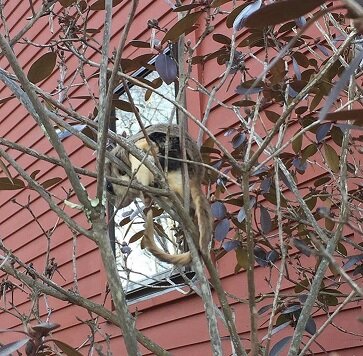Flying Squirrels in Massachusetts
We deal with all kinds of squirrel removal in Massachusetts, and included in that are flying squirrels. Massachusetts is home to both the northern and southern flying squirrel. There are slight differences in their appearance, but for our purposes they act the same when invading a home. Flying squirrel removal is most common in the winter time, as they look to group up in your attic during the colder months. They do not hibernate, so they remain active throughout most of the winter, which is when the calls really come in for them.
These squirrels are nocturnal, so they are most often heard at night. Not seen very often, the distinguishing factor in identifying their presence is noises at night in the attic. They often start moving at around 7-8pm, and the activity can last until the early hours of morning. They typically have a favorite “bathroom” area, known as a latrine, and this can leave stains that show up on your ceiling. They don’t need a tree branch or power line or anything to reach your roof, as they can glide up to 150 ft using the membrane between their back and front legs. They live in colonies that can reach over 30 individuals, so often times hearing what sounds like a party in the attic can be another sign of their presence.
When we get calls for flying squirrels, we approach it as a two step process. We have to first get them out, and then we have to seal them out. Getting these guys out can be done multiple ways, including setting lethal traps or one-way doors on the entry points. Flying squirrels live in colonies, with groups reaching 30+ individuals, so trapping to get each and every one can be a long process. The use of one-way doors is the most effective way of getting them out, since you can install it, seal up any other entry points, and simply let it sit for a short period. They are active all year round, so even in the winter, they’ll be in and out of the attic most nights and will evict themselves through the one-way door within a few days. Just as with any other species, you need to seal up any point that could become a potential entry, because once they have been there once, their scent is left behind for others to pick up on. We want to make sure all angles are addressed so they cannot get back in anywhere else.


